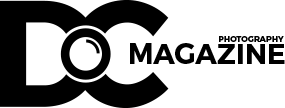Testing is essential to building a top-notch body of work and forging the relationships that’ll further your career, but how do you get the most out of it?
As the creative force behind Manchester’s leading makeup academy who offer professional makeup courses, KLMA, Kiera Louise Harrison imparts some of her experience for those who are looking to follow in her footsteps:
Behind every great make-up artist and carefully curated portfolio, is always a whole catalogue of experimental test shoots. Not to mention a wealth of on-set experience garnered from testing with a whole host of different photographers, stylists, models and hairstylists, all keen to push the boundaries.
Testing is a vital part of building yourself up as a makeup artist with both established connections and an impressive book, especially if you’re trying to take your career in a new direction.
Of course, it can be time consuming, and connecting with the right creatives is imperative to making it worth your while.
What should a make-up artist hope to get out of testing?
Testing is a vital part of our industry and something all makeup artists should look to do as much as possible. It not only results in portfolio images, but the on-shoot experience and relationships that are formed from collaborating are invaluable.
Choosing who to shoot with and what type of tests is the challenge. I shot with amateur models and inexperienced freelancers when I first started and, although I made contacts, the work wasn’t great. Once I started shooting with artists at my level or better, I started to see the results.
In terms of what can go wrong on a test shoot, what should a makeup-artist look out for?
Anything, and it often does go wrong, so be prepared for every eventuality. The most common issue is someone not showing up.
Many shoots have an element of improvisation, so the ability to adapt is key. Try not to throw in the towel if something goes wrong, and look for other solutions. Practically speaking, bring kit that will cover all weathers when shooting on location. We once shot in 40 degree heat and the makeup artist’s kit melted. Turns out a cool-box is multi functional.
What’s going to compel a photographer to want to test with a makeup artist?
Photographers are no different to employers. They want to see quality, experience and your style. A lot of our industry is based on perception. They choose makeup artists visually (ie: based on their portfolio) so I’d always suggest a makeup artist spends time and money making sure their work represents their artistic vision, is presented beautifully and shows that they have worked with top talent where possible.
What’s the best way for a makeup artist to self-start a test shoot?
A good test shoot starts with a single idea. What do you want to shoot? What’s the concept? Who influences your work?
I used to come up with wild ideas for test shoots that were influenced by artists, nature, fashion, film… there should be no rules or limitations when it comes to conceptualising a test shoot.
Once you’ve got an idea, put a mood board together (Pinterest is great for this) and think about where you could shoot it and who would be right for your shoot.
How would a makeup artist go about finding the right creatives to collaborate with?
My trick was always to find people who I thought were better than me. Look for freelancers who you think will bring value to your shoot.
Hair and styling are very important but if you choose a bad photographer and model, it will really show. When starting out, it can be tricky to attract the more established freelancers to shoot with you, but you’d be amazed at how many will say yes if you ask.
If you’ve got your concept together, you can add a link to your professional looking moodboard which often deflects from the fact your portfolio is at its early stages.
How do you make sure everyone gets what they need from a test shoot?
- Sit down with everyone involved before anything happens. Make sure you’re all on the same page. We have a downloadable Test Agreement which outlines things like copyright, when the images will be given out, whether or not they’ll be retouched, and if you plan on submitting for publication etc.
- Find the balance between managing a shoot and overpowering a shoot. If you are the one who has arranged the shoot then you are probably the one with the vision.
- Remember, you’ve chosen the others for their talents, so once you’ve showed them your idea let them express themselves. If someone isn’t getting it, take them to one side and have a quiet talk. A test shoot takes a lot of effort from a lot of people so it’s important to get it right.
- Be serious when you’re shooting, be fun when you’re done. I once worked with a top stylist in London who I’d met socially on a few occasions. As soon as our shoot started, he stopped joking about and focused. After the shoot we all went for drinks and he was back to his fun self. I learned two things that day; Don’t mess about when the shoot starts, and you make amazing contacts if you go for a drink after.
Is it ever time to stop testing?
The only time I stopped testing was at the height of my editorial career as I was shooting on-trend campaigns that kept my book up to speed and honestly, didn’t have the time. On the other hand, when I was shooting commercial jobs that were very much just for the money, I’d test in the evenings to stay in the loop and keep my fashion crew close to me. There’s never a time to stop learning, that much I know to be true.
Article by Kiera Louise Harrison of KLMA Makeup Academy, Manchester

